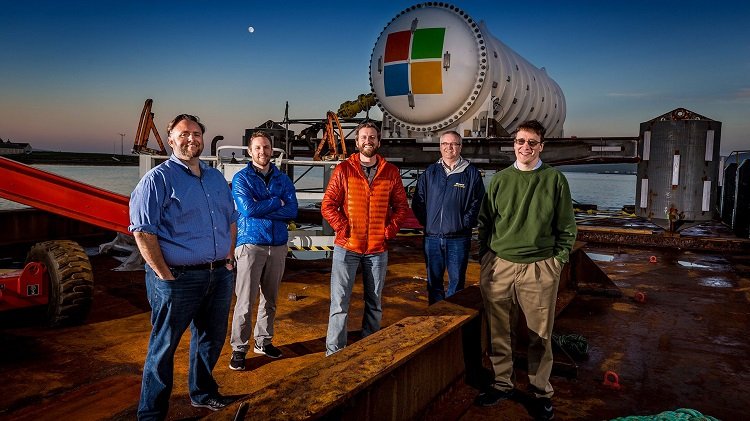Leveraging submarine technology and working with pioneers in marine energy Microsoft developed an self-sufficient underwater datacenters that can deliver lightning-quick cloud services to coastal cities. An experimental, shipping-container-size prototype is processing workloads on the seafloor near Scotland’s Orkney Islands, Microsoft announced today.
 The deployment of the Northern Isles datacenter at the European Marine Energy Centre marks a milestone in Microsoft’s Project Natick, a years-long research effort to investigate manufacturing and operating environmentally sustainable, prepackaged datacenter units that can be ordered to size, rapidly deployed and left to operate lights out on the seafloor for years.
The deployment of the Northern Isles datacenter at the European Marine Energy Centre marks a milestone in Microsoft’s Project Natick, a years-long research effort to investigate manufacturing and operating environmentally sustainable, prepackaged datacenter units that can be ordered to size, rapidly deployed and left to operate lights out on the seafloor for years.
“That is kind of a crazy set of demands to make,” said Peter Lee, corporate vice president of Microsoft AI and Research, who leads the New Experiences and Technologies, or NExT, group. “Natick is trying to get there.”
Lee’s group pursues what Microsoft CEO Satya Nadella has called “relevant moonshots” with the potential to transform the core of Microsoft’s business and the computer technology industry. Project Natick is an out-of-the-box idea to accommodate exponential growth in demand for cloud computing infrastructure near population centers.
 More than half of the world’s population lives within about 120 miles of the coast. By putting datacenters in bodies of water near coastal cities, data would have a short distance to travel to reach coastal communities, leading to fast and smooth web surfing, video streaming and game playing as well as authentic experiences for AI-driven technologies.
More than half of the world’s population lives within about 120 miles of the coast. By putting datacenters in bodies of water near coastal cities, data would have a short distance to travel to reach coastal communities, leading to fast and smooth web surfing, video streaming and game playing as well as authentic experiences for AI-driven technologies.
“For true delivery of AI, we are really cloud dependent today,” said Lee. “If we can be within one internet hop of everyone, then it not only benefits our products, but also the products our customers serve.”



